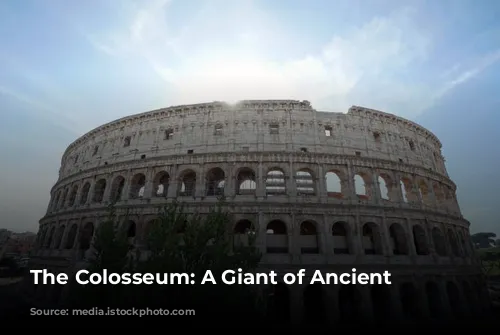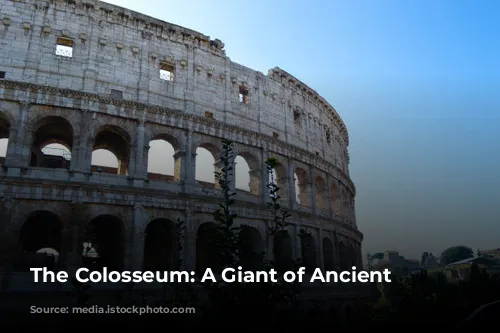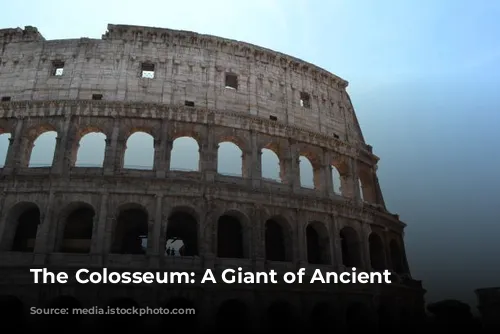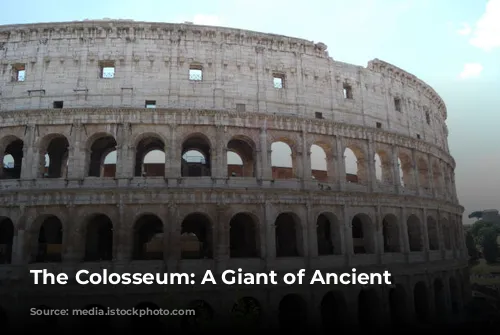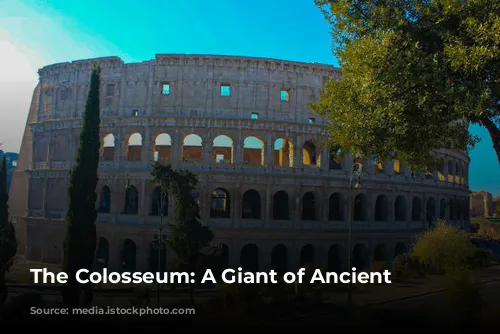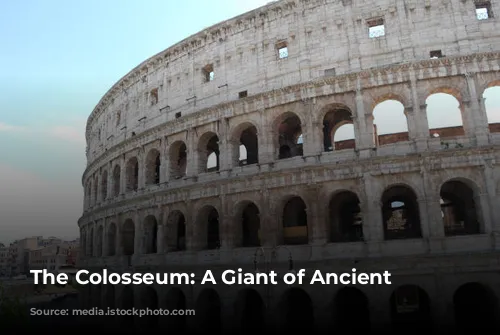The Colosseum, also known as the Flavian Amphitheatre, is one of the most iconic landmarks in the world. Its imposing structure, a testament to Roman engineering prowess, has stood for centuries, whispering tales of gladiatorial combat and grand spectacles.
A Monument to Power and Spectacle
The Colosseum was a monumental project, initiated by Emperor Vespasian of the Flavian dynasty and completed by his son, Titus, in 80 AD. The opening ceremony was a spectacle of epic proportions, lasting one hundred days and featuring thrilling gladiatorial battles, wild animal hunts, and even impressive naval battles. The historian Suetonius records that over 5,000 animals were slaughtered during these opening festivities.
But why is it called the Colosseum?
This name, first mentioned in a prophecy by the Venerable Bede, is believed to have originated from the massive statue of Emperor Nero, known as the “Colossus,” which stood nearby. The prophecy itself paints a powerful image of the Colosseum’s enduring legacy: “Rome will exist as long as the Colosseum does; when the Colosseum falls so will Rome; when Rome falls so will the world.”
A Masterpiece of Architecture
The Colosseum is a breathtaking example of Roman architectural skill. Its elliptical shape, designed to accommodate a vast audience, is a testament to their understanding of geometry and space. The structure boasts four levels, each with eighty arches, the second and third adorned with impressive statues. It’s hard to imagine that this magnificent building was constructed in less than ten years.
The Romans were masters of the arch, a construction technique that allowed them to distribute weight efficiently. This principle is evident in other Roman marvels such as the aqueducts. The Colosseum itself can be seen as a series of aqueducts stacked one atop the other, a testament to their ingenuity.
Time’s Imperfect Legacy
Today, the Colosseum stands as a poignant reminder of the passing of time. Although much of its outer wall is missing, the remaining structure provides a glimpse into its former glory. During the Middle Ages, the Colosseum was plundered for its valuable materials, with marble, lead, and iron used in the construction of buildings like the Barberini Palace, Piazza Venezia, and even St. Peter’s Basilica.
Despite the ravages of time and the greed of man, the Colosseum’s enduring presence speaks to its architectural significance and historical value. The holes still visible in the columns are evidence of this plundering, but they also tell a story of resourcefulness and survival.
A Seat for the Masses
The Colosseum could accommodate up to seventy thousand spectators. The tiered seating was designed to ensure perfect views from every position. Admission was free for Roman citizens, but seating was arranged according to social status, mirroring the hierarchies of the time. The common folk occupied the upper tiers, while senators, priests, and the emperor enjoyed the best seats closest to the action.
Spectacles of Power and Entertainment
The Colosseum’s events were a carefully orchestrated blend of entertainment and political messaging. The gladiatorial contests, animal hunts, and elaborate theatrical displays provided both diversion and a powerful symbol of the emperor’s authority.
The arena floor, once a carefully constructed mixture of brick and wood, is now gone. However, beneath the present surface lie the intricate cellars that housed the machinery for the Colosseum’s dramatic special effects. Elevators and winches, whose rails are still visible today, were used to raise animals and gladiators through trapdoors, creating dramatic surprises for the audience. The Colosseum offered a variety of spectacles, including the “Venationes,” fights between exotic animals, or men and animals, and the “Silvae,” staged forest scenes featuring both real and artificial animals.
The Gladiators: Heroes and Victims
The gladiators, the stars of the Colosseum, were a diverse group. Many were prisoners of war who chose to fight for their freedom, while others were simply seeking fame and fortune. Their skill in combat was celebrated, and they were revered by the crowds, particularly the women.
Gladiators were classified into different types, each with its own unique weapon and fighting style. The “Retiarius,” armed with a net, trident, and knife, was a formidable opponent. The duels were carefully arranged for dramatic effect, with the audience eagerly participating in the fight’s outcome.
If a gladiator was wounded, he could appeal for mercy by raising his arm. The fate of the defeated gladiator rested in the hands of the emperor, who could choose to pardon him or condemn him to death. The winners were celebrated with golden palm leaves and riches.
A Legacy of Brutality
The Colosseum witnessed a staggering amount of bloodshed. The Romans, it seems, had a taste for the violent and the dramatic. The smell of blood and burnt flesh filled the air during the hunts and mass battles, a testament to the brutal reality of these events.
The Colosseum’s Enduring Presence
As the Roman Empire waned, so too did the Colosseum’s use. It was repurposed as a home for confraternities, hospitals, and even a cemetery. Throughout the Middle Ages, the Colosseum remained a majestic ruin, drawing visitors from far and wide.
In a bid to protect it from further destruction, Pope Benedict XIV declared it a sacred monument dedicated to the Passion of Christ. A cross was placed on a pedestal, serving as a reminder of the suffering endured by Christian martyrs. This cross remains a symbol of the Colosseum’s complex history, bridging the divide between pagan past and Christian present.
Today, the Colosseum stands as a symbol of both ancient Rome’s glory and its brutality. It is a testament to the power of human ingenuity and the enduring fascination with gladiatorial combat. The Colosseum continues to attract millions of visitors from around the world, who come to marvel at its scale and ponder the events that unfolded within its walls.
